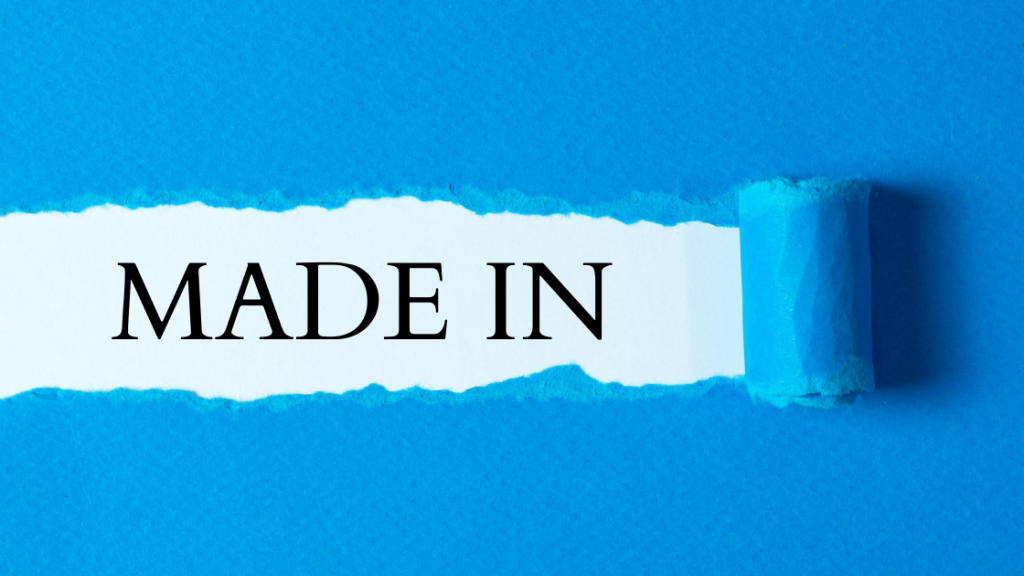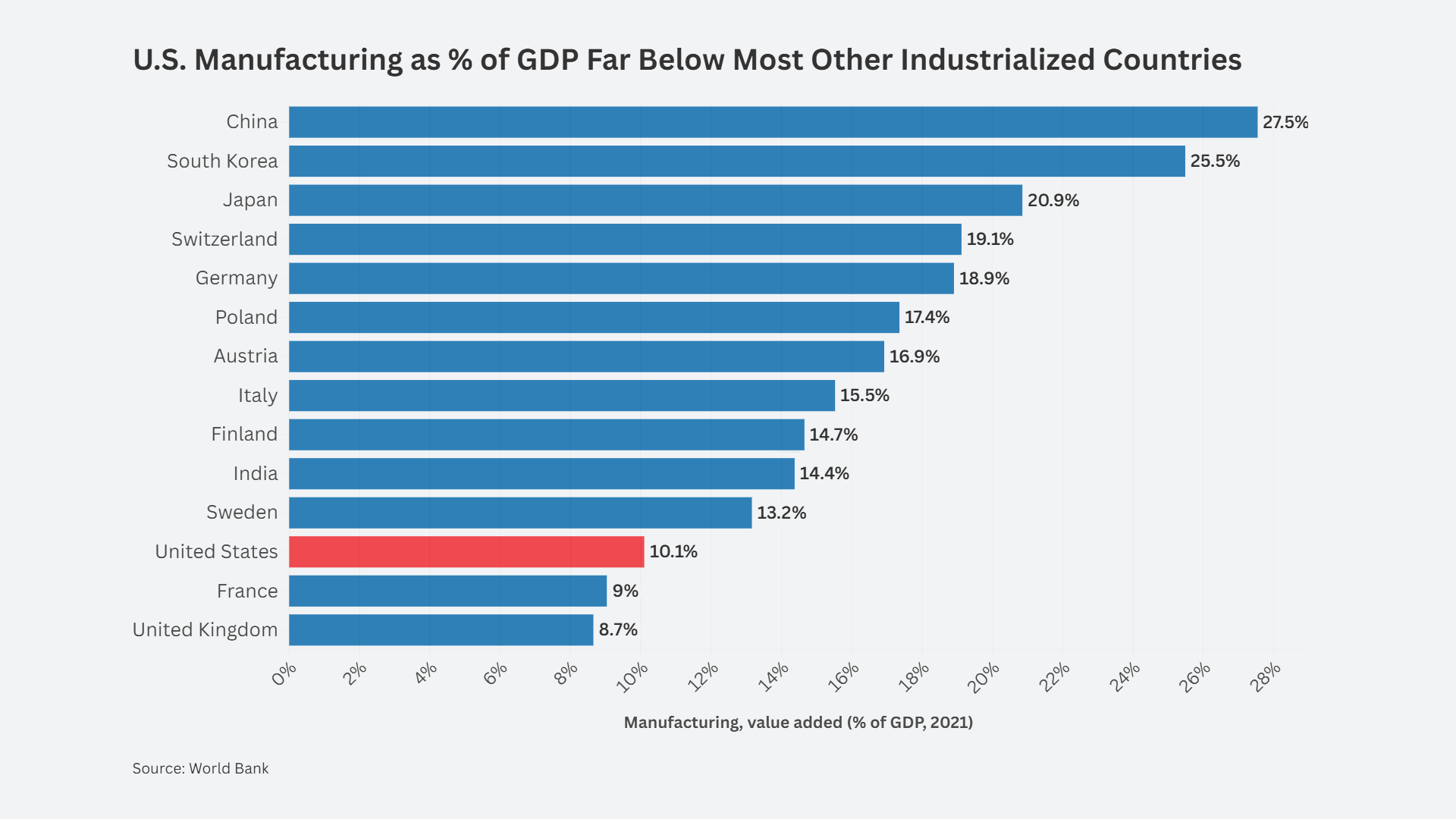by Greg Owens | Co-Founder & CEO Sherrill Manufacturing/Liberty Tabletop | Co-Chair CPA Buy American Committee
In the face of strong consumer sentiment to buy American, many brands, stores and online platforms are reacting by trying to hijack the brand.
One of the impacts of the COVID-19 pandemic has been a sharp increase in American consumer demand for products that have the Made in USA label on them. As seen below in a Google Trends chart web searches containing the key phrase “made in USA” surged in March of 2020. In addition to this social media was flooded with calls for patriotic citizens to spend their economic stimulus dollars on American made products and not to send the money to China by spending them on imported products. The question “where is it made” was frequently seen in the comments section of online retailer’s posts on Facebook. Stores, online platforms such as Amazon and brands have taken notice of this trend and as a result, have reacted.
Some have actually made the decision to re-shore production of their products. A recent example of this is Craftsman that just announced that they will build a factory in the United States to manufacture some of their hand tools. Unfortunately the reaction from others has been less constructive and in many cases in violation of the law. Plain and simple they are trying to deceive customers by making it seem as if their products are American made when they are not. They are using sly online advertising techniques to lure in consumers with false made in America messaging only to lead them to a site with a product that is imported. In the case of our company, our trademarked brand was even used by a major online platform to lure people looking for USA made flatware to a page using our brand information but displaying their own products that were all made in China. We contacted them and they agreed to remove the page and the campaign.
So what are the issues and what can be done to defend the Made in America brand from those who pretend to hijack it through deception and trickery? In order to do so, we must look at what is and is not permitted when a company wants to claim that their product is Made in USA. Jurisdiction lies with the Federal Trade Commission, FTC, and there are laws on the books that define what is and is not permitted.
First there is a non-qualified or straight up “Made in USA” claim. In summary this means that all or virtually all of the product including its components and packaging are made in the USA. The use of the word “virtually” creates a situation that makes the law subject to some degree of interpretation but for all practical purposes it means all. To further complicate matters the state of California has created their own law and interpretation of “Made in USA” with even more stringent rules. Unfortunately there have been some unintended consequences of their strict interpretation that have hampered even the most purely intended brands from using Made in USA on their packaging or in their advertising. As a result their legal departments have advised many brands to remove any sort of Made in USA claims from products that are legitimately Made in USA for fear of potential legal exposure. This further complicates the situation for American consumers who are looking for American made products.
Second there is the “qualified” Made in USA claim which is where the bad actors come into play. To understand how they seek to deceive the American consumer you need to first examine what is a complex and convoluted set of rules involving these “qualified” claims.
The terms that are used here are things like: Designed in the USA, Crafted in the USA, Assembled in the USA, and the murkiest of all, Made in the USA with globally sourced components. In addition to this, the claim will almost always be made with an image of the American flag knowing that most people will not bother to read the fine print. Sound incredible? Here are a few examples of products I found in Walmart and Lowe’s. Trust me, it was not hard to find!
Then there are cases of just flat out deceptive advertising practices on the internet. Here is an example of what happens when you Google search for “toasters made in USA”- up pops several listings, ads etc where you can supposedly shop for a toaster that is Made in America. Exactly none of these toasters are Made in the USA. If you dig further the search will direct you to websites and pages on Amazon where the made in USA claim repeats and ultimately to a product listing that does not mention the country of origin at all. Simply put this is outrageous and is a clear example of deceptive advertising aimed to trick the American consumer.
So what can be done to protect the integrity of the American brand? There are actually several steps that need to be taken, some are easy and others that may take more time and effort to implement. First and foremost the FTC needs to step up and start enforcing existing law more forcefully, including putting some teeth into the matter by handing out meaningful fines for those who violate the rules. A recent example of the FTC doing just that was the false Made in USA claims by Williams Sonoma relating to cookware where an unprecedented $1 million dollar fine was levied, not to mention the negative PR associated with the incident. We need more of this.
The next step is to extend country of origin labeling requirements to the web so that all those who list a product for sale on their own site or on platforms like Amazon, eBay, Alibaba, etc… must, as is required with the packaged product sold in stores, prominently display the foreign country of origin on the listing. While this does not relate to Made in USA claims, it will clearly identify imported products. Last month Senators Tammy Baldwin (D) Michigan and Rick Scott (R) Florida introduced the “Country of Origin Labeling (COOL) Online Act” that would do just that. The bill has broad-based bipartisan support but there will be those who oppose it. Opposition will come from those brands, online stores and platforms that are attempting to hijack the Made in America brand as well as those in Congress who fund their campaigns and will be lobbied hard to fight the bill.
In terms of allowing a qualified Made in USA claim to even exist there are some who would like to do away with it all together. I don’t think that is the best idea. If you read the qualified claim language on the FTC site it is not permitted to simply repackage, turn a screw or add one small component and make the “assembled in USA” assertion. Reshoring production is a complicated process and many components may not be available from a U.S. source, eliminating qualified claims would discourage companies from even trying.
What is missing is a percentage of content rule. The first objection will be from the abusers will be that this is a burdensome and costly requirement. That is simply not true. Anyone who has ever been involved in manufacturing knows that every product that is made has a bill of materials with a cost for every component as well as the cost to assemble and package. It is really as simple as dividing the separate items into Made in USA vs. not Made in USA and calculating the percentage based on that math. Any junior level cost accountant could easily do this. The net result would be to give consumers the ability to know how much their purchase of a “qualified Made in USA” product is actually made in the United States. Right now the American consumer is literally flying blind and those who choose to be deceptive in their practices are having a field day misleading them. The percentage would help consumers make a better informed choice.
At the end of the day American consumers want to buy products that are Made in USA, that much is clear. Tightening up the rules and providing the consumer with more complete and truthful information would be a huge step forward in helping them do so. It would also provide significant encouragement for brands, stores and online platforms to carry and promote items that are made in the United States.


















